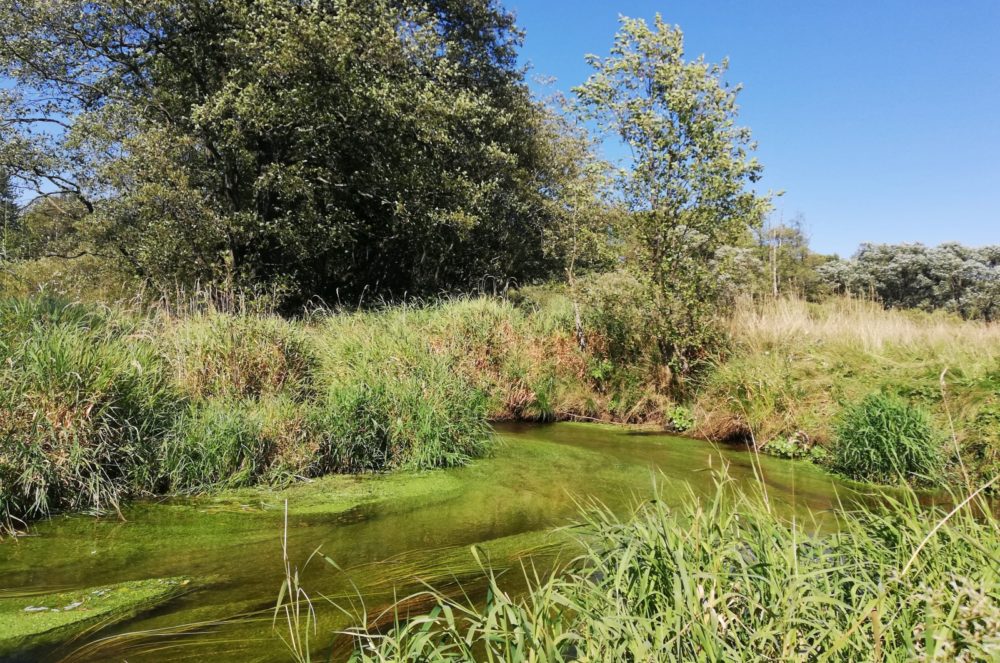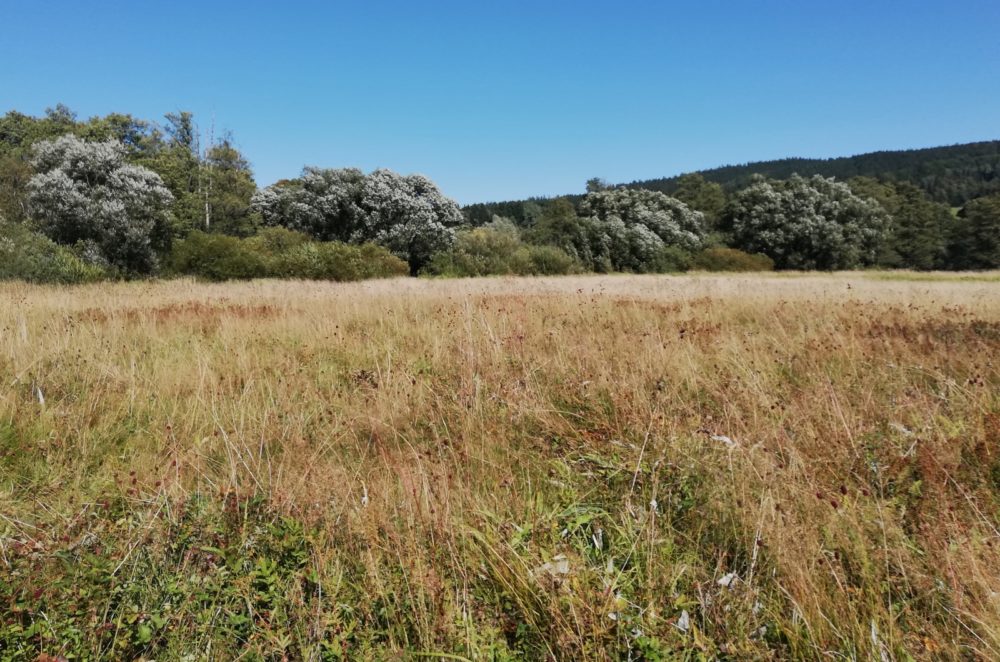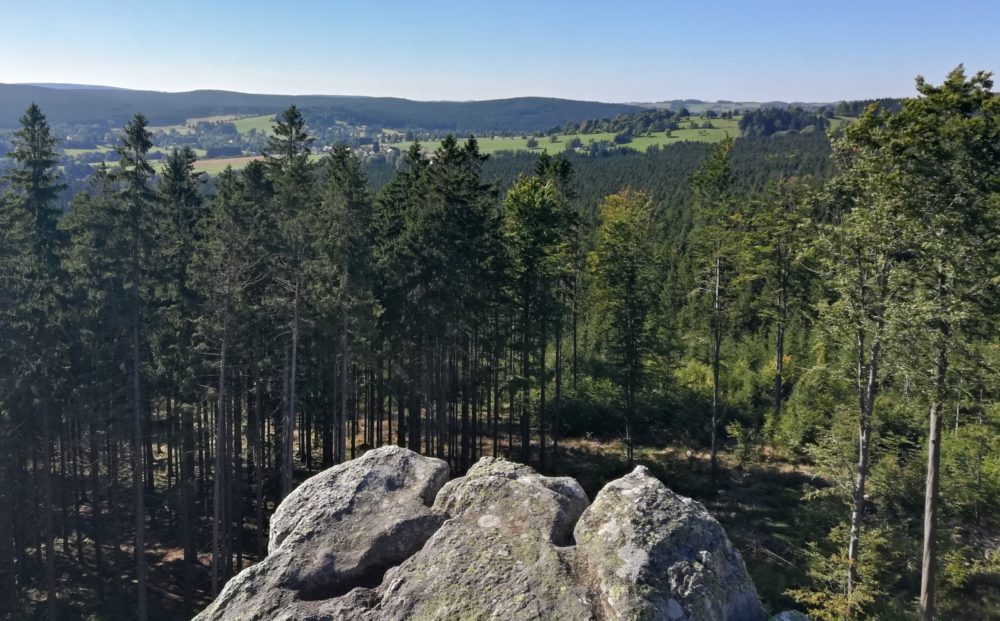How much water do forests supply in times of climatic drought?
 The water management importance of forests in the agricultural-forest landscape is irreplaceable and it is in the public interest to maintain it. As it is argued, during longer periods without rain, runoff from forests predominates over runoff from neighbouring agricultural sites and other areas. These periods are considered to be periods of climatic drought. Scientists developed a precipitation-runoff study for the upper part of the Svratka river catchment in the Bohemian-Moravian Highlands, in order to prove this hypothesis in practice. As they found, in the Svratka river catchment there are on average 180 days per year when runoff from the forest prevails over runoff from agricultural sites in the rest of the upper Svratka catchment.
The water management importance of forests in the agricultural-forest landscape is irreplaceable and it is in the public interest to maintain it. As it is argued, during longer periods without rain, runoff from forests predominates over runoff from neighbouring agricultural sites and other areas. These periods are considered to be periods of climatic drought. Scientists developed a precipitation-runoff study for the upper part of the Svratka river catchment in the Bohemian-Moravian Highlands, in order to prove this hypothesis in practice. As they found, in the Svratka river catchment there are on average 180 days per year when runoff from the forest prevails over runoff from agricultural sites in the rest of the upper Svratka catchment.
The altitude of the catchment is 630–834 m above sea level. Agriculture is characterized there by a cereal-potato area with a large proportion of permanent grassland (TTP). The forests are represented by spruce (74%), beech (18%), and pine and other deciduous tree species (8%).
The upper Svratka river catchment has an area of 367,01 km2. Svratka river springs in the Bohemian-Moravian Highlands in the neighbourhood of the “Fryšavský kopec” hill (800 m above sea level), near the village Cikháj, in the area with 90% forest. In the lower part of the watershed, there this catchment flows through terrain plateaus with 30% forest. Overall, the catchment includes 43% of forests, 29% of arable land, 20% of permanent grassland and 8% of other areas.
 Although the forest has a 5% higher amount of aerial precipitation than other cultures in the catchment area, due to interception, 78 mm less precipitation falls on the forest soil surface. (Interception is the amount of water held by plants. It is the portion of precipitation that never reaches or runs off the soil surface).
Although the forest has a 5% higher amount of aerial precipitation than other cultures in the catchment area, due to interception, 78 mm less precipitation falls on the forest soil surface. (Interception is the amount of water held by plants. It is the portion of precipitation that never reaches or runs off the soil surface).
However, it is important that the forest soil, supplied with a lower amount of precipitation than the rest of the catchment, shows a higher supply of groundwater in the hydrogeological parent rock. This fact is the cause of higher outflows from the forest complex in times of climatic drought. Forest soil is more permeable to water seepage than the soil of surrounding agricultural crops.
As scientists have measured, in the upper part of the Svratka catchment, there flows out from the forest complex in times of climatic drought 14.4% more water, than from other areas. The area share of 43% of the forests will supply the river with a volume of 46.3% of the entire runoff in times of climatic drought and will increase the minimum flow in Svratka in Dalečín by an average of 6.2% in the catchment.
The forest complex with an area of 157.8 km2 will provide 981,642 m3 more water to Svratka in times of climatic drought (180 days a year) than will be provided by other cultures and catchment areas with the same area of 157.8 km2.
 Since the water runoff from the forest complex is 14.4% higher than the average runoff from the rest of the basin, the hydrogeological sub rock of the forest complex has a higher groundwater supply than in case of agricultural fields, TTP and other areas, even if precipitation reaches the forest soil due to interception water through the crowns of forest trees by less intensity than to other forestless cultures in the catchment.
Since the water runoff from the forest complex is 14.4% higher than the average runoff from the rest of the basin, the hydrogeological sub rock of the forest complex has a higher groundwater supply than in case of agricultural fields, TTP and other areas, even if precipitation reaches the forest soil due to interception water through the crowns of forest trees by less intensity than to other forestless cultures in the catchment.
This is due to the fact that the laterfall layer in forest stands has a much higher intensity of rainwater infiltration into the forest soil. Then, forest soil is more favourable for accelerated percolation through preferential paths along the roots of forest trees than agricultural crop soil.
The increase of the Svratka runoff at the Dalečín control station in times of climatic drought by 6.35% due to the effect of 43% of the forest area does not appear to be very significant. However, the outflow volume of 982 thousand m3 is not negligible, e.g. for taking drinking water in the Vír reservoir to supply the population with water in times of drought.
In the conclusions, the researchers summarized these facts:
- The average annual water runoff in the upper catchment of the Svratka is 33.5% lower from the forest than from its non-forest area. This is due to significantly higher evaporation from the forest. Higher evaporation from the forest increases the air humidity above them, thereby increasing the amount of atmospheric precipitation over the agricultural-forest landscape.
- The hydrogeological sub-rock of the forest has a higher underground water supply in times of drought than in the case of forest-free areas. This is the reason for higher groundwater outflows from forests than from non-forest cultures in times of climatic drought.
- During the dry season, 14.4% more water flows from the forest than from the rest of the forestless catchment, which consists of 29% agricultural fields, 20% TTP and 8% other areas.
- The complex of 157.8 km2 of forest in the catchment supplies the Svratka river to Dalečín water reservoir with 6.2% more water than a forestless area of the same area.
- 43% of the forest in the upper Svratka catchment supplies 46.3% of the total runoff to the Dalečín control station, 57% of the forestless area supplies 53.7% of the total runoff.
- The increase in the Svratka runoff in times of climatic drought by 6.35% due to 43% of the forest in the catchment represents a volume of 982,000 m3.
- All results of the performed analysis apply only to the catchment area of the upper Svratka to Dalečín control station; it shows the tendencies of runoff conditions in very specific natural conditions. Therefore, the application of the obtained parameters is problematic, even in similar areas.
- The analysis reliably proves that, in the natural conditions of the upper Svratka catchment, the forest supplies more water to the river in periods of climatic drought than the same acreage of crops area without forests.
Paper „Runoff from forests in the Svratka river catchment during a period of climatic drought“ („Odtoky z lesů v době klimatického sucha v povodí řeky Svratky“) can be downloaded here.
Paper was prepared during solution of the project NAZV QK1810415 „Vliv dřevinné skladby a struktury lesních porostů na mikroklima a hydrologické poměry v krajině“(„The influence of tree composition and structure of forest stands on the microclimate and hydrological conditions in the landscape“).
Authors of paper: Vladimír Švihla, František Šach, Vladimír Černohous; FGMRI, Research Station Opočno (VÚLHM, v. v. i., VS Opočno), e-mail: sach@vulhmop.cz
Prepared by: Ing. Jan Řezáč, FGMRI (VÚLHM, v. v. i.), e-mail: rezac@vulhm.cz
Illustration photos: The Svratka river and its catchment in the neighbour of the Milovy village, author Klára Šimerová
